The St. Louis Art Museum, or SLAM, houses an incredibly diverse array of artifacts and artworks, ranging from paintings, portraits, sculptures, textiles, and other less conventional mediums. While the museum utilizes both permanent and visiting exhibitions, unfortunately there was not one in town when I visited Febuary 3rd, 2024. As such, I stopped to look at one of their permanent galleries, a personal favorite section from one of my first visits. Gallery 259, dedicated to ancient artifacts from cultures surrounding the Mediterranean Sea, including Mesopotamia, with a focus on Greece and Rome and including early Italic and Central Asian pieces as well.
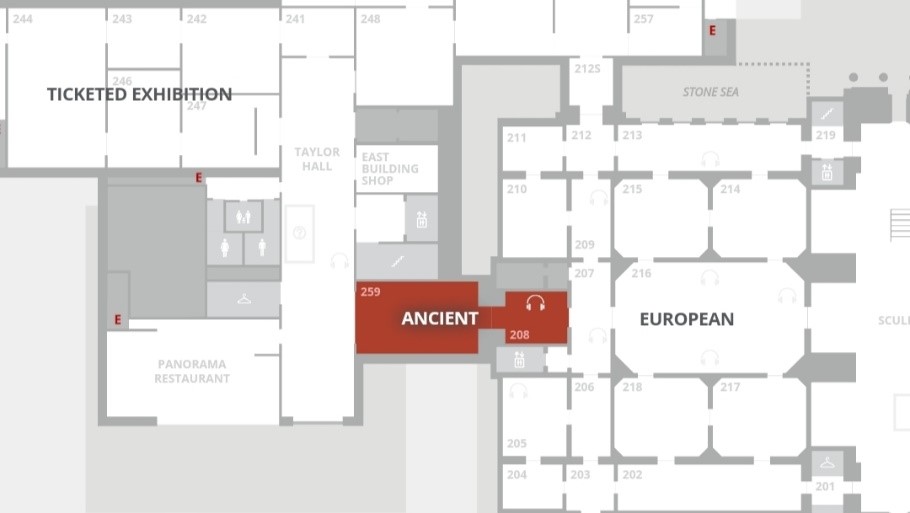
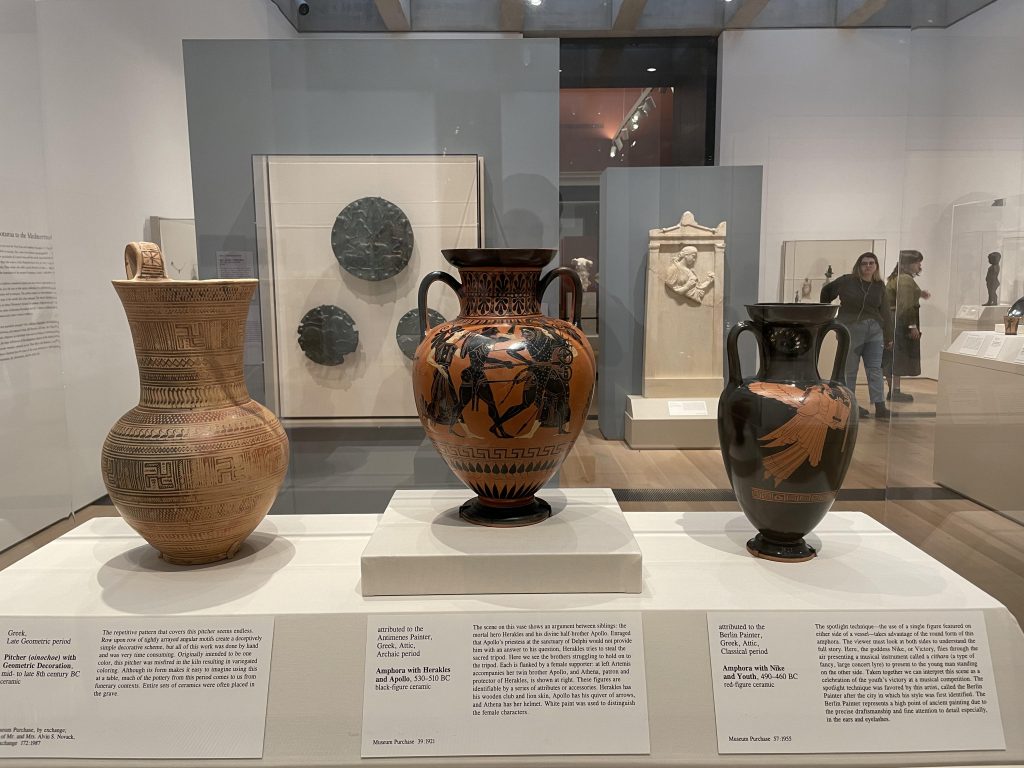
Unfortunately, due to how the exhibit was structured, as well as its status as one of the older galleries, I was unable to find the names of the curators who developed the displays. Depending on where you park and how you enter the building, the hall might be among the first things you see or last, and it’s entirely possible to miss it completely due to the sheer size of the museum. The hall itself is approximately 14×16 or so, unfortunately I was unable to get exact measurements, and houses a selection of artifacts from various different cultures in the Mediterranean, and outlines their significance as well as how these groups may have interacted. There are two means of entering the exhibition, each from opposite sides of the museum, and as such there is not a particularly clearly defined method of navigating the exhibit, seemingly intending for visitors to interact with individual objects that catch their eye rather than proceed on a set route.

If I were to attempt to encapsulate the overall focus of the exhibit, it would be the idea of human interaction and interconnectedness via trade and other interactions in the ancient world, and how these interactions might still have some influence on how we perceive the world around us today. Unfortunately, the overall goal and message the curators might have hoped to impart is difficult to determine due to the free form nature of the exhibit. There were several prints on the walls alongside artifacts dedicated to a specific culture group or concept, but even these seemed fairly unconnected to each other. On the whole, this gallery seems as though it is intended to serve as a brief overview and summary of the ancient Mediterranean world, rather than as something with a certain narrative or focus on a specific idea. As a result, I feel the exhibit is intended for someone with fairly minimal knowledge of this subject. It feels as if this is more of a jumping off point for further research, than the product of research already done.
The primary cultures the exhibit focuses on are the Grecian city-states, various Italic cultures, and the Achaemenid empire, out of what would be recognized as Persia. It is believed to be through this third group that sculptures and pieces that have been identified as Iranian, Turkish, and even Central Asian came to be found in the Mediterranean, having been introduced as trade and barter goods, worn as jewelry or other personal adornments, or as mementos of home for travelers and migrants.
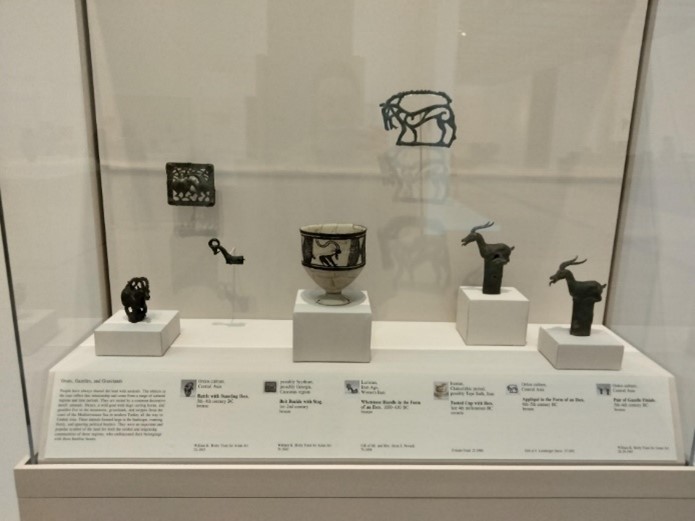
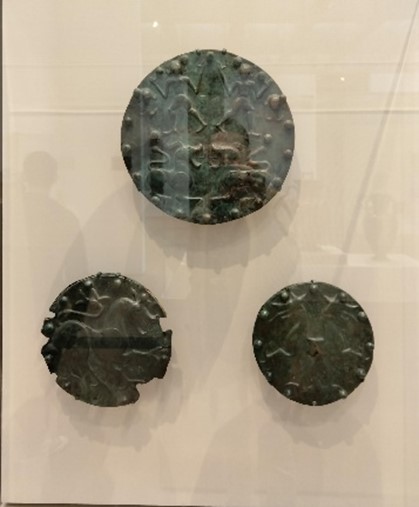
But for me, the biggest draws were the examples of Grecian and Roman pottery and sculptures. I have always been amazed by the abilities of Greek, and later Roman, sculptors and potters, their expertise and skills used to emulate the human form being second to none, but also in the case of sculpture capturing the intricacies of windswept cloth.
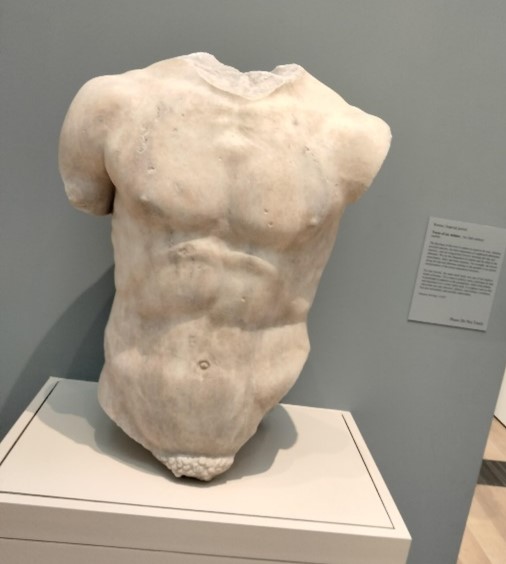
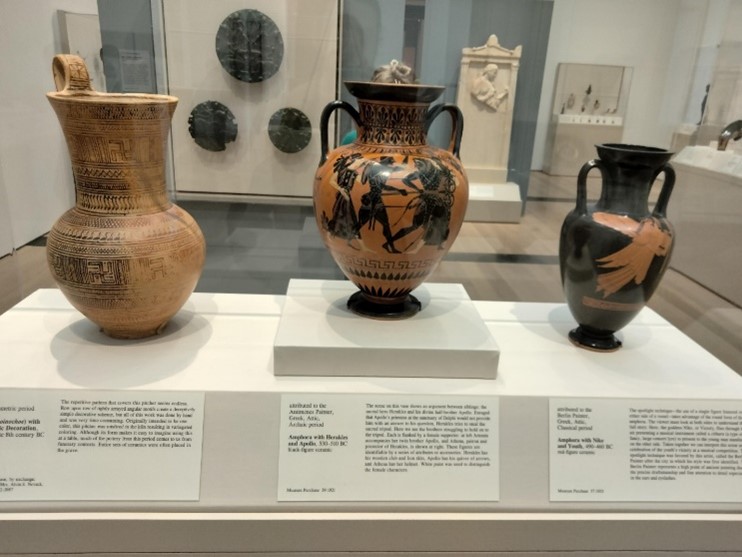

While the exhibit is certainly highly informative, there are a few points of criticism that I would raise. Primarily, the exhibit does not have an easily parsed overall narrative or message, as it seems to try to give a general snapshot of different cultural presences around the Mediterranean rather than focusing on any specific object or interaction.
Secondly, and potentially as a result of the first point, it’s difficult to know where to start and which displays are meant to reference each other, or if the curators intended for there to be a particular order at all.
I feel as though were these two aspects changed, the visitor given more direction and the overall idea more clearly communicated, this would be an amazingly useful resource for students and undergraduates in need of a starting point for research, or for specific examples of cultural interactions. As it is currently formatted, unfortunately the visitor is in someways required to possess a level of prior knowledge and understanding of the ancient Mediterranean world in order to appreciate what is being displayed, and how it should be navigated to construct at least a chronological journey. I feel that with a bit more guidance and clearer idea of what the exhibit is meant to tell the audience would elevate the experience from a general if useful historical snapshot to something that showcases history of shared interactions and artistic inspirations of the cultures focused on. All the pieces are already present, the presentation is just a little too dry.
Leave a Reply